Long Distance Surf Casting Reels – UPDATED: 04/08/2024
Long-distance surf casting is a popular and effective method used by anglers to target fish in the surf zone. To achieve optimal distance and performance, it’s essential to have the right equipment, especially when it comes to surf casting reels.
In this updated article, we’ll provide you with the latest information on the best long-distance surf casting reels, along with the most recent technological advancements, customer reviews, and tips for improving your casting distance.
Not much has changed over the past three years as far as fishing techniques goes, however, we did find new hardware for fishing some of these include
Penn Battle III DX – The latest addition to the Penn Battle series, this reel features a full metal body, CNC gear technology, and a smooth HT-100 drag system, making it a popular choice among surf anglers.
Shimano Ultegra XTD – Known for its high gear ratio and excellent casting distance, the Shimano Ultegra XTD reel is a top choice for long-distance surf casting enthusiasts.
Daiwa BG MQ – With its lightweight monocoque body, impressive line capacity, and advanced drag system, the Daiwa BG MQ reel has become a favorite among experienced anglers seeking a reliable surf casting reel.
This is a quick key takeaway however continue reading the full article for more information.
The list below of fishing reels for long distance surf casting
best long distance surf casting reel


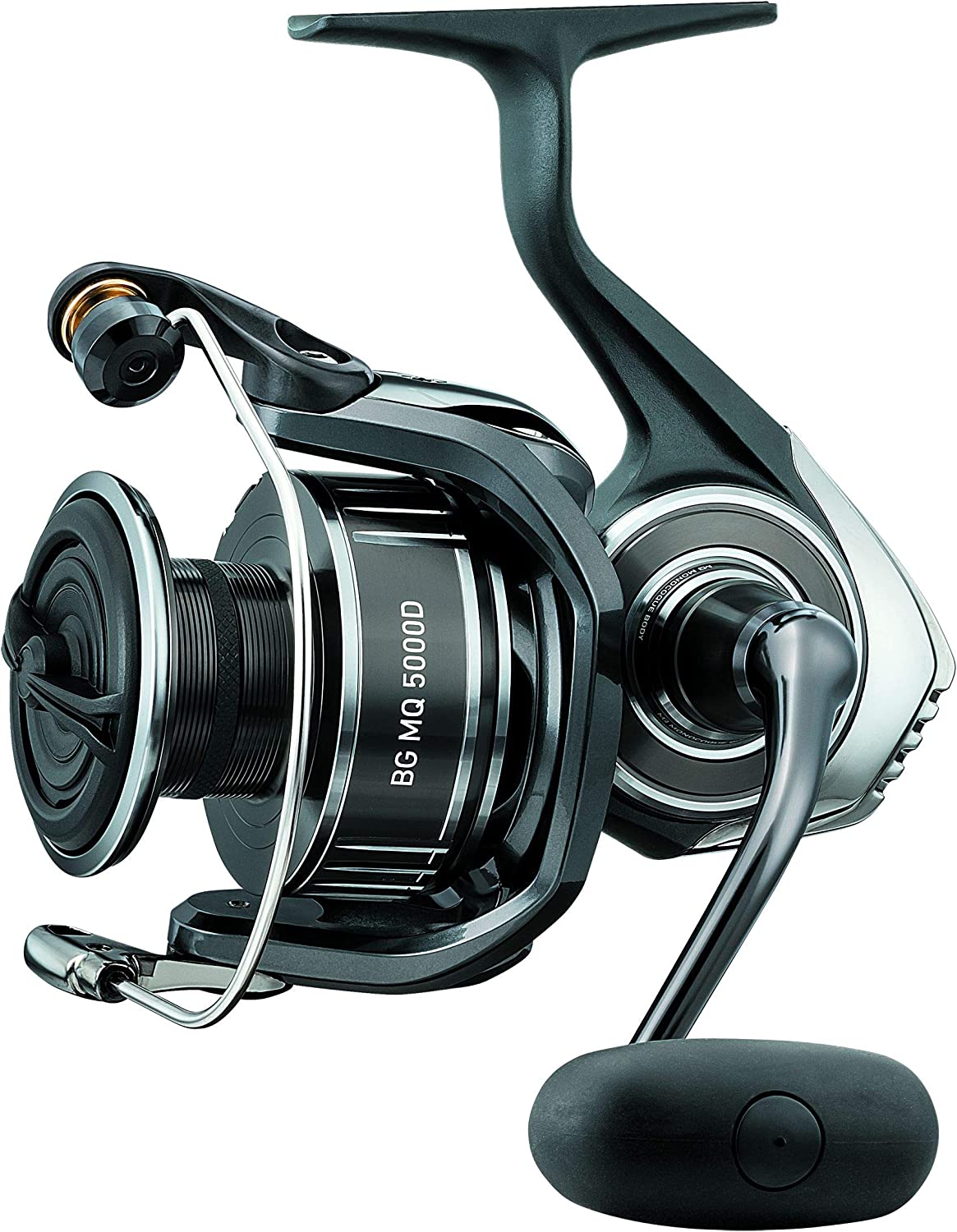
Daiwa M7HTMAGST Millionaire Long Distance SurfCast Reel

Want maximum casting distance while surf fishing? The Daiwa M7HTMAGST Millionaire Long Distance SurfCast Reel is what you may be looking for. These reels are able to reach speeds of up to 30,000 RPM. With such a high-level performance in these spools, it’s no wonder why Daiwa is a top-level brand when it comes to fishing. With the magforce-z , it applies smooth magnetic braking when the spool is reaching its maximum speed which prevents overrun. The amount of control is fully adjustable to meet any surf conditions and casting style.
The Shimano Speedcast XT B
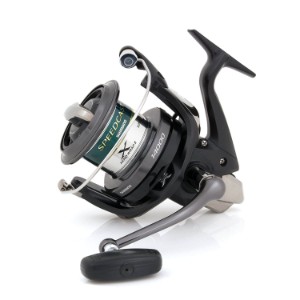
The Shimano Speedcast XT B is great when it comes to long casting performance. It is equipped with instant drag and supplied with a spool reducer which is capable of adapting to any situation. Using Shimano’s X-ship gearing which offers a high level of maximum efficiency. This reel has an extremely powerful retrieve ration of 4.3:1 making it ideal for long distance casting. Another reason the Shimano speed cast XT B is great for long distance casting is the combination of the 2-speed oscillation, aero wrap II and a cold forged AR C Spool. Perfect for large open waters! Also, I forgot to mention it has a line reducer (size 10.000)
Shimano Ultegra CI4+ 5500 XTB small Long cast reel
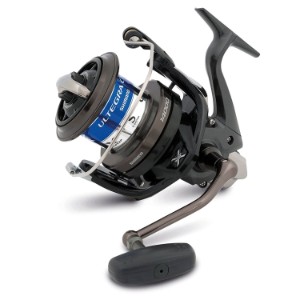
Shimano Ultegra CI4+ 5500 XTB small Long cast reel is up there when it comes to super tuned long distance surf fishing. The Ultegra features a gear ratio of 5.3:1 with a line retrieve crank of 105 cm at 41.34 inch. It weighs in at approximately 455g (16.05 oz). The line capacity is mm/m: 0,30-390 / 0,35-290 / 0,40-210 lb/yds: 10-425 / 12-315 / 16-230 with a max drag force of 15kg – 33.07 pounds. That’s why we consider Shimano another top-level brand in the fishing world.
Penn Spinfisher V Spinning Reel

The Penn Spinfisher V Spinning reel, engineered to perform during the most intense saltwater battles. The Penn Spinfisher V is another surf casting reel which we feel is capable of long distance cast and packs enough fish stopping power. Designed and built for the most adventurous saltwater angler. The watertight frame and full metal construction give this reel the ability to last for years to come. It has an HT-100 slammer drag system which gives it a smooth reeling action that you need to conquer fierce gamefish. Superline spool, smooth operating bearing assembly, and a friction trip ramp make this reel very versatile and durable in harsh saltwater conditions.
PENN Slammer III Spinning

Here is another great PENN reel. The PENN Slammer III. This reel is built for heavy-duty fishing from boats or shore. The Slammer 3 PENN reel features a new IPX6 Sealed system which will keep salt water out of the drag system and gearbox. Another great feature is the Dura-Drag material in the PENN Slammer 3. This full metal body reel utilizes the CNC gear technology and a 6+1 stainless steel bearing system.
Van Staal VS100BXP Black Spinning Reel

Van Staal VS100BXP Black Spinning Reel.. WOW where to start, the Van Staal has a new X-Series which offers more quality and dependability. You can now say goodbye to the jerky drag. With a super-fine-tuned drag setting, the Van Staal has adjusted the drag curve. This new upgrade now allows your line to flow off the spool with way less effort than before. Creating longer casting distance. These reels are one of the best spinning reels that money can buy.
Abu Garcia Premium Cast Series
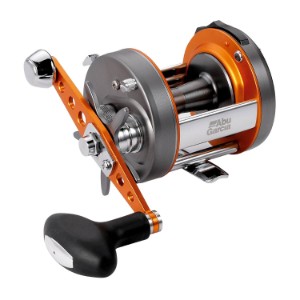
Abu Garcia Premium Cast Series features a carbon matrix drag system for optimal durability and performance. It also has 2 HPCR bearings in the spool. A Corrosion resistant IAR bearing. Line out an alarm. Magtrax brake system. Open top CT frame and Dual stoppers. This is a higher priced reel but with that comes extreme high quality and durability. You will absolutely love this reel. It’s no wonder why it’s rated 5 stars.
Penn Fathom Star Drag Conventional Baitcast Reel

Penn Fathom Star Drag Conventional Baitcast Reel is a lightweight reel. With the live spindle design, it makes it quick to retrieve and extremely castable. If you need distance when casting then the PENN Fathom SD is considered one of the longest casting reels on the market today. The PENN Fathom has a full metal body and side plate that keeps your gears in precise alignment even while under extreme loads. It has an HT-100 drag system which will perform smoothly from beginning to end.
Daiwa Sealine-X SHA Conventional Saltwater Reel
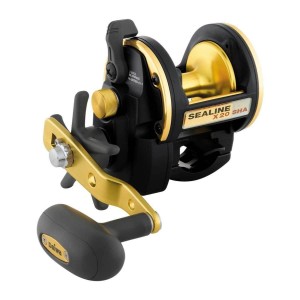
Daiwa Sealine-X SHA Conventional Saltwater Reel is perfect for jigging or trolling. Another great thing is, this thing fires far. So if you are looking for a long distance casting reel here it is. As mentioned before, Daiwa is one of our favorite top-level brand fishing reels and the sealine-x SHA is a part of that. 6.1:1 Gear Ratio 3 CRBB Bearings and a 17.60 lb Nax Drag system. Very smooth cast and retrieve. Comfortable. Powerful. Ergonomic. Lightweight. Sturdy. The Daiwa Sealine-X SHA Conventional Saltwater Reel may be your next favorite reel!
Avet Raptor Series

Last but not least we have the Avet Raptor Series. Proudly made and crafted in the USA. The Avet Raptor has a patented power dual carbon fiber drag system which will produce two times the drag output of the standard series. Precision machined 6061 T-6 marine grade aluminum and stainless steel components. The beautiful finish has anaodized superior corrosion resistant material. Also has a true one-piece frame. Powerful lever drag system with adjustable strike pre-set. Silent dog and gear anti-reverse system which makes this one of the most reliable reels in the industry.
Increasing your casting distance video
Here is a 25 mintue long video with tips and tricks to help you increase your casting distance. Feel free to watch the video or Continue reading for more tips and tricks when it comes to casting distance.
The Basics and Some Surf Baitcasting Techniques
Here are some basics when it comes to surf baitcasting, some tips, and techniques. When you know the best techniques to further your gusto, the echelon of your zeal attains a different height.
Overview:
Baitcasting basically refers to fishing using live bait or a lure tied to a reel at the very edge of a rim, thrown into the water when the fishes are enticed and eat the decoy or bait, the reel is spun back to bring them out of water and bam! The prey just got trapped! Now fishing might be a bread and butter for some or merely a leisure pursuit for the others; but if you take to it, you the very basics and probably the techniques to access the best out of it. Here are some basics to
Baitcasting, what a joy. When it comes to baitcasting there are certain techniques and tricks that can help further your distance when casting your lures or live bait. Let’s briefly look over some of these tips that you should consider when casting your rod.
Here are some surf baitcasting techniques to enhance your dexterity in this arena:
Some rudimentary considerations:
- Casting slowly is what every Baitcaster needs to know. Why? Well! Casting it briskly will not enable your rod to get the load when the lure is pulled.
- Decoy moves in the same direction, your rod tip moved right before you halt utilize
- the entire load stocked up in the rod, halt your rod without further lowering from your aimed line.
- All the other things at par, further lowering the casting thwack will help you fetch more load.
Some surf bait casting tactics:
- Leave about 6 to 12 inches of line from your bait or lure to your rod rip. If you have a sinker attached to your line that should be 6 to 12 inches from the rod tip.
- The next pertinent point to ponder would be the posture. Left foot front, then right hand to sway the rod, and vice-versa.
- Bending the elbow probably a great aid.
- Go for the most apt distance as per your stance. Too far or too close might not give you the desired grip and hinder the process.
- Hold your reel properly, make sure you have a good grip on your rod and that you’re able to rest your thumb over the reel spool
- Consider resting your thumb at a slight angle on the spool instead of laying your thumb flat on the line
Considering the aforesaid tactics and quintessential points, your surf Baitcasting is sure to be a whoopee.
How To Cast A Baitcaster With A Light Lure
Casting distance with a light lure can be difficult. If you’re having difficulties casting light lures you may want to consider switching up your fishing lines. For crankbaits, try using 10 or 12# fluorocarbon. If it’s plastics try 15# braid fishing line. Also, lighter action surf casting rods with fast tips for light lures seems to do good. Also, some find that the key to distance using light lures comes down to your rod.
To answer how to cast a baitcaster with a light lure, we need to get the proper equipment.
- The Gear ratio – The gear ratio, depends on the baitcaster reel. Standard speed depends on this ratio which is typically 4:1
- The line – Typically, a strong line of thin diameter is preferred to lower the weight and proper length should be ensured.
- The spool and tension – Spool size and tension of reel in it, must be managed perfectly to maintain a taut line and proper distance of cast.
The Lure
There are several light lures, which go perfectly with baitcasting techniques. The light lures are typically smaller in weight and considerably smaller in size. They come in proper design and color, to lure in the fishes, and hook them up.
To cast a baitcaster with light lure you need a simple normal rod, with medium density and good length of around 6 inches. A proper reel and baitcasting equipment installed. Attach your lure carefully to the end of the reel. Bend your casting arm, and sweep the rod, until your reel reaches your eye level and into the water. Hold the handle firmly and hold the reel properly. Make sure you release the reel spool, and get ready to catch the fish. Once you get the fish, reel in the line quickly and firmly.
Know About Casting Ultra Light Lures Far
Maybe you are casting ultra light lures and need more distance. If that’s the case, here are some tips when casting ultra light lures.
Casting ultra light lures is not an easy job, and if you really want to succeed with this venture, you must do some adjustments to your equipment, or make sure you get the right ones.
- Use proper line – When you are set to use ultra light rod and lines, the thickness of lines will matter. Try to use the lines with a smaller diameter will prove beneficial for this venture, by increasing the distance of your cast.
- Length of rod – the Proper length of the surf casting rod, will help you cast easily. Preferably you can use a 6 inches medium rod with the light spin cast reel.
- Proper Lure – When you are using ultralight lures, make sure you pick the right colors and wobbling ones. There are special types of hard bait lures designed for ultralight fishing techniques. Typically around 50mm average length of the baits and different colored baits are proven to be most effective in the ultralight fishing.
A fisherman needs a lot of casting practice while dealing with ultra light fishing. There are different types of material available to design your equipment with. Attaching a simple extra split shot just in front of your lure will increase the casting distance considerably. This will add a small amount of weight on the fishing but will help you load and cast the ultralight lures.
All About How To Cast A Baitcaster Far?
Fishing dates back to 17th century and unequivocally is still one of the most renounced hobbies. Just to move to a phlegmatic place, accessible to a pond or lake, take out your Baitcaster and you are a way to go. Further, at your disposal, we here will reflect on how to cast a Baitcaster far so that you can relish your hobby, or if you’re a commercial angler your bread and butter, to the fullest.
Learning the Artistry:
Let us just sneak into the very basics of how to concoct this mainstream commodity required to pursue fishing and save yourself some bucks for, buying an actual Baitcaster might turn out to be an expensive affair. Not to overlook, using a Baitcaster can be a little onerous chore, however, by simply getting a hold onto the angels of the Baitcaster reel, one can master the art.
- The reel line must be in unless the decoy is 6 to 12 inches away from the rod’s tip.
- The way one holds the rod perpetrates equal relevance. The ideal position to clasp the rod must be – the thumb resting on to the reel spool while the fingers wrapped around for a tenacious grip. However, if you want to control the line’s flow, just rest your thumb at a slight angle rather than laying it flat on to the reel line.
- Turn over the gear to let the real face up. This will assist you in using your wrist to baitcast.
- Time to release the reel spool.
- Now bend the rod slightly at your elbow and raise the rod to let it go past the vertical.
- Tune the rod in a way such that the angle between your eyes and the rod is of 30 degrees.
- Once the bait reaches the target, press down the reel button to stop the halt the reel.
- Not halting the reel spool will render your bait to keep diving down and eventually you will end up having a reel entangled to eternity.
Not much of an uphill chore, casting the Baitcaster requires little endeavors on the user’s part. Just clench onto these basics and you will see it turn facile too soon.
What size spinning reel for surf fishing
when it comes to best reels for surf fishing you’ll need to know what size to go with especially when using spinning reels.
I would prefer the largest reel available on the market if money and exhaustion were not an issue.
If no side impact is applied, who would deny an extra-strong reel with a huge line capacity?
Nobody — nobody …
But the harsh truth is that it is more costly and more difficult to maneuver larger reels.
It can be so tiring for your arms, wrists, and shoulders to carry an 8000 reel for many hours.
Yeah, in the fishing store, the difference in weight might not be so noticeable, but once on the sand, with a bigger reel, you’ll get tired quicker.
In order to prevent exhaustion, this restricts us to how far we can go up while searching for a surf reel and requires us to stick to a maximum scale.
What is the cap, then?
It all depends on the amount of line you need, as explained above.
In a previous post, we proved that you need about 250-300 yards of the line when surfing to hit the second and third sandbars of most beaches while leaving ample line on the spool to play and battle fish.
The only thing you can do now is looking for a reel that can carry your maximum line diameter of 250-300 yards.
Bear in mind that a thicker line requires a larger spool.
So, determine which line diameter is best for your objectives and conditions of fishing, and then select the right reel for you.
Generally speaking, for each breaking strain and for both mono and braid, most manufacturers have useful data about the line potential of their reels. It will therefore not be difficult for you to select the surfing reel that meets your objectives.
What size daiwa bg for surf fishing
So you got your heart set on a daiwa bg for surf fishing. Here is what is recommended.
Braid Line Recommended: 10-25 lb
Recommended Mono: 5-7 kg (10-14 lb)
The 6-7 ft long barra or snapper rods rated up to 20lbs or light-med 10-11 ft surf rod rated up to 12lbs can match nicely with this medium size reel. Right fishing rod for 5000 Sized reels: It’ll also go well with an 8-9 ft general purpose rod.
How to set drag for fishing
We are in a trade-off situation here, as you can see. To enjoy more power over fish, we need to tighten the drag and not let them take the entire line, and at the same time, we need to loosen the drag so that we feel secure on the shoreline and the rod is not too heavy to navigate during combat.
Therefore, we need to set our drag to a sweet spot where both objectives are fulfilled. Fish management and comfort 30 percent (or 1/3) of the line breaking intensity is the rule of thumb for the drag environment.
If you use a 15 lb test line, for instance, then the optimum drag for your reel should be about 5 pounds.
However, depending on your background, the type of rod and line you are using, the fish species you are pursuing, and the beach structure where you fish, this rule of 30 percent can be changed (+ /- 10 percent).
In the next pages, all the variables that determine the correct drag to be used from shore will be addressed in more detail.
The drag depends on the targeted game fish
The species you are targeting is the first element that determines the optimum drag for surf fishing.
If you are familiar with the place where you fish and you know that most species are normally less than 10 pounds in your area, then the drag setting should not be a source of concern, and you can use any drag and still be fine (under your pound test, of course: D).
Tighten the drag and you’re not going to give it any chance to fish. Or, to spend more time in battles and have more fun playing fish, you can loosen it.
Choose what’s best for you
The range is yours. Choose anything that’s more fun for you.
As most fish are under the 10 lb mark, if you want to tighten the drag (say 40-50 percent of your pound test), then your rod and line will not lose anything. This will allow you to comfortably land the most hooked fish without even releasing the line.
On the flip side, you risk losing any line during the first moments of battles if you try to loosen the pull, but you should be okay to quickly transform those small and medium-sized fish.
However, when you realize that heavy predators are kept within your casting range, the drag environment can be a source of concern.
If this is the case, then at the optimum setting (30 percent) you can retain your drag or even tighten it a little bit (say 35-40 percent).
As soon as they take the bait, big fish will place huge pressure on your line, and you reel should be able to resist the initial pressure and avoid releasing too much line during the first moments of the battle.
The first moments after bites are, as a general rule, those that present the most threats. The chances of catching the fish will increase if you manage to survive those moments. So make sure that the drag setting is capable of dealing with those early combat rounds.
Keep your drag tight
Having said all that, you have to bear in mind that surfing can not be expected. You invite any fish of all sizes to take your bid once your bait is in the water. Therefore, during surf fishing, you should always keep your drag tight, or at least at the optimum rate (around 30 percent).
Yeah, you may not have generated big catches in the past in the surf zone you are fishing, but you should not take that as a rule. To deal with those happy exceptions that arise from time to time, you have to hold the drag right.
The drag also depends on the type of line you’re using
Monofilament and fluorocarbon allow more drag than the 30 percent rule to be used because, when exposed to pressure, they are able to stretch and thus reduce the tension on the rod.
This helps you to tighten the drag and restrict the line release without tiring your arms and shoulders, or risking your rod being broken.
On the other hand, Braid is very strong and doesn’t stretch, so nothing will be there to withstand the tension as pressure is applied on the string, and all the pressure will be placed on the string, the rod, and on you as a result.
This can be so tiring and challenging because you will be on all the spikes. There’s nothing the rod and line can do except pass on this pressure to you.
Braided Lines and Drag
When using braided lines, this is why it is recommended to set less drag.
You want to detach the line from your reel as soon as you begin to feel awkward holding the rod.
So, to provide some figures, I’ll say that when using braid, 25-30 percent is the ideal drag, and 30-35 percent when using mono.
Read our article where, from a surf fishing perspective, we explored the pros and cons of monofilament and braid.
The darg also depends on your rod’s action
Another aspect to remember when defining the drag for beach fishing is the stiffness of your rod.
Slow action rods, generally speaking, allow more drag than the 30 percent rule to be used.
When exposed to strain, as slow action rods bend absolutely, they are also very effective at absorbing the shocks and reducing the tension on the line and the rod.
This enables us to use more drag and restrict line release without losing comfort and the safety of the rod.
Slow Action Rod
In other words, by using a slow action rod, you know that the versatile rod will be there to cushion the tension, even if something very large takes the bait and causes huge pressure on the line, and it won’t put it all on you.
You are allowed to tighten the drag and restrict the line release in this case, so pressure spikes would not be as tiring and dangerous as when using rigid rods.
On the other hand, stiff (fast action) rods are perfect for surf fishing because they provide better detection of bites and powerful hooksets.
The firm tip of fast rods, however, does not effectively cushion pressure spikes, placing all the tension on the string, the rod, and therefore on you.
But you need to set less drag (25-30 percent) when using fast rods so that the spool releases the line as soon as something heavy takes the bait. The only way to minimize fatigue and keep the rod in a secure place is to do this.
Drag depends on experience
As a surf angler, your experience will make you less reliant on the drag environment.
In other words, the more practice you have, the less drag prior to your surf fishing trips you can worry about.
First, by pulling the line and seeing how it leaves the spool, the experience will give you the feeling of whether your drag is good or not.
Second, practice will give you the skills needed to lose less line during the battles and maximize drag, even if your setting was totally wrong before the cast.
Maximize Drag
- How and when to recover the line during the war
- When the spool should be palmed
- During the various stages of the battle, how to pull or lean the rod
- When the drag should be tightened and when it should be loosened to let the hooked fish fly
- When and how to walk during the fight along the shoreline and when to stand still in one clear position
Put another way, the items that tire the fish when losing the minimum of the line need to be known.
All these abilities can be taught (I’ll offer some tips later), but only after years and years of trial and error are they mastered.
Packing your gear and going out to the field and making mistakes is the only way to really master these abilities.
You will build the feeling of the right drag to use and become less worried about it once you gain some experience and accumulate several won / lost battles.
With that said, if you lack experience and you are just starting out, you should not be concerned. Stick to the 30 percent rule and you’re going to be fine with catching a lot of shore fish.
The Drag also depends on your fishing structures
The underwater terrain is one last aspect to remember when determining the drag for surf fishing.
Open waters with clear sandy bottoms allow low drags to be used as there is no great danger of allowing hooked fish to escape in any direction they want.
Conversely, you need to keep the drag close (30-40 percent) while fishing rough grounds filled with grass, rock piles, and abrasive clusters so that you don’t let fish run to the shelter where they can snap or tangle your string.
Put another way, your reel can release less line while fishing snaggy shores so that you can pull hooked fish out of organized regions and drag them to open waters where there is less chance of cutting your line or getting snagged at something.
How to set drag for surf fishing
Experienced fishermen without any instruments will change their drags. If they need to tighten or loosen the drag, a simple pull of the line is enough to tell them. As said before, only after years and years of trial and error can this feeling be gained?
For beginners, to set the drag, a digital scale is needed.
The first thing to do is to assess your line’s breaking power.
Divide that by 3 or multiply by 30 percent once you know the pound test of your line to get your optimum drag configuration.
So, for instance, if your line is a 30 lb test, then 9-10 pounds is the correct drag to use.
In this post, you can then consider all the variables and variables we discussed and change the number to whatever suits you best.
Using a digital scale
Pick a digital scale after you do all the math, and use a solid knot to tie the line to the hook of the scale. Now lift your hands slowly off the scale and be ready to take the reading of the weight that allows the line to be released by the reel.
If the reading is below the measured drag, tighten the drag and loosen it if the reading is above it.
These measures need to be repeated before the scale displays the exact amount of your measured drag settings.
I know I’m bad at clarifying some stuff, so I decided to make this easy example for you.
Now, I suggest that another person hold the rod and change the drag while you read the scale to do all of this. It can be done with one person, but with two, it is much easier.
If you do not have a digital scale, a nice and recommended one is here:
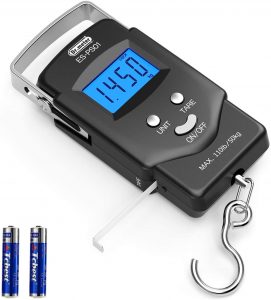
Can you change the mid-battle drag?
Generally speaking, when targeting small to medium-sized fish, there is no need to adjust the mid-battle drag. Set your drag to 30 percent of the line strength for such species and you should be good at taking all the rounds of the fight without hitting your reel’s cap.
However, you will need to keep tweaking the drag setting while targeting heavy fish before you land the fish onshore. Why? and why? Since a significant portion of your line will be taken by large fish, and as a general rule, the smaller the spool’s diameter, the slower the line comes out, and thus the higher the drag.
Let’s say the drag setting was 3 pounds when the spool was loaded with the line, and you lost half of the line you had in the spool after a heavy redfish hit your bait. Do you think there’s always the same drag you had before the cast? Not of course. In reality, your drag setting is doubled by losing half of the spool. So in this case, 6 pounds is your new drag, which represents 60% of your line power.
You will always fall into this situation when targeting heavy fish and you should therefore continue to lower your drag as fish take more of your line, and vice versa.
If you can tighten or loosen the drag will also determine the conduct of the hooked fish. In general terms, you want to loosen the drag and let it absorb more energy while the fish is in resistance mode. When you feel like the fish has settled down and fewer hops and runs are done, tighten the drag and try to obtain as much line as possible.
Closer to shore lower your drag
There’s something here to consider now, that the closer you are to shore, the lower your drag should be. Why? and why? And when they feel too close to shore, the fish may perform one or two final leaps. So at that moment, you want a low drag so that fish do not tear their mouth off the hook as they shift against the current.
Often, as hooked fish start moving towards cover and loosen it when they enter open waters, you need to tighten the pull. Never let fish run to abrasive items where your line can be cut.
Again, it is possible to teach these abilities, but they are only learned in the field. So give yourself some time before going after big fish to get acquainted with these tactics. In other words, when you are just starting out and just targeting tiny and medium-sized fish, there is no need to think about all of that.
These tips are targeted at intense fishing and catching big monsters that are able to snatch a large amount of line before they give in to you.
What makes a good surfcasting reel
The onshore wind is blowing steadily. Waves burst all over and crash. It’s chilly and quiet. Except for surfing anglers, this night will be unfishable for everyone. It takes an angler to cast with distance and precision to climb out onto a rock jetty, wading into the shore break, or perching on a pier. Nowhere is the efficiency of reels more relevant than surf fishing. High-speed bearings, fine-tuned casting brakes, heavy drag, and bulletproof construction make some of the most advanced surf fishing reels on the market.
Anglers need to pick the right reel for the job to leverage this casting technology. Magnetic or centrifugal brakes, rotating or traditional, 2500 or 6500: anglers have a number of options.
Surf anglers make long casts, like a manual bail ride, with light lures or rigs to avoid wind knots. The angler flips the bail ring into gear after making the cast, holding the line close to decrease the risk of a loop forming deep in the spool.
What do you use for surf fishing?
Mole crabs, squid, sandworms, ragworms, bloodworms, shrimp, mullets, and hard/soft shell crab are some of the most powerful live baits. Ask your local bait/tackle shop worker about some of the best live baits to use in the area in which you are preparing to fish.
Caring for your fishing reel
After every saltwater, brackish water, or filthy freshwater fishing ride, make sure you give it a good cleaning to ensure the durability of your reel. The best way to clean a reel is to flush it with fresh water in a gentle way. It pays to remove the spool and handle every now and then and send a little oil to any moving parts. A little bit of TLC will go a long way towards extending the life of a reel.
As they are tightly packed with tiny washers, springs and cogs, avoid opening any reel casings and it can be painful to lose one. Leave this to a technician who is recorded.
Frequently Asked Questions
Before we end this article, let us go over some frequently asked questions.
Conclusion
As always we hope you found this buyer guide to finding a long-distance casting reel informational. If you enjoyed reading our content we welcome you to bookmark our site as we are continuously growing and updating our information. If you loved the information you found here you might also want to read our other write-ups such as in groundfishing pole holders or maybe you’d be interested in reading about the best ways to clean a saltwater reel. Since you were interested in long-distance surf casting reels we feel you may also want to read our other post on long distance surf casting rods, Either way, keep the sport of fishing fun and alive and we hope to see you on our next article.











































